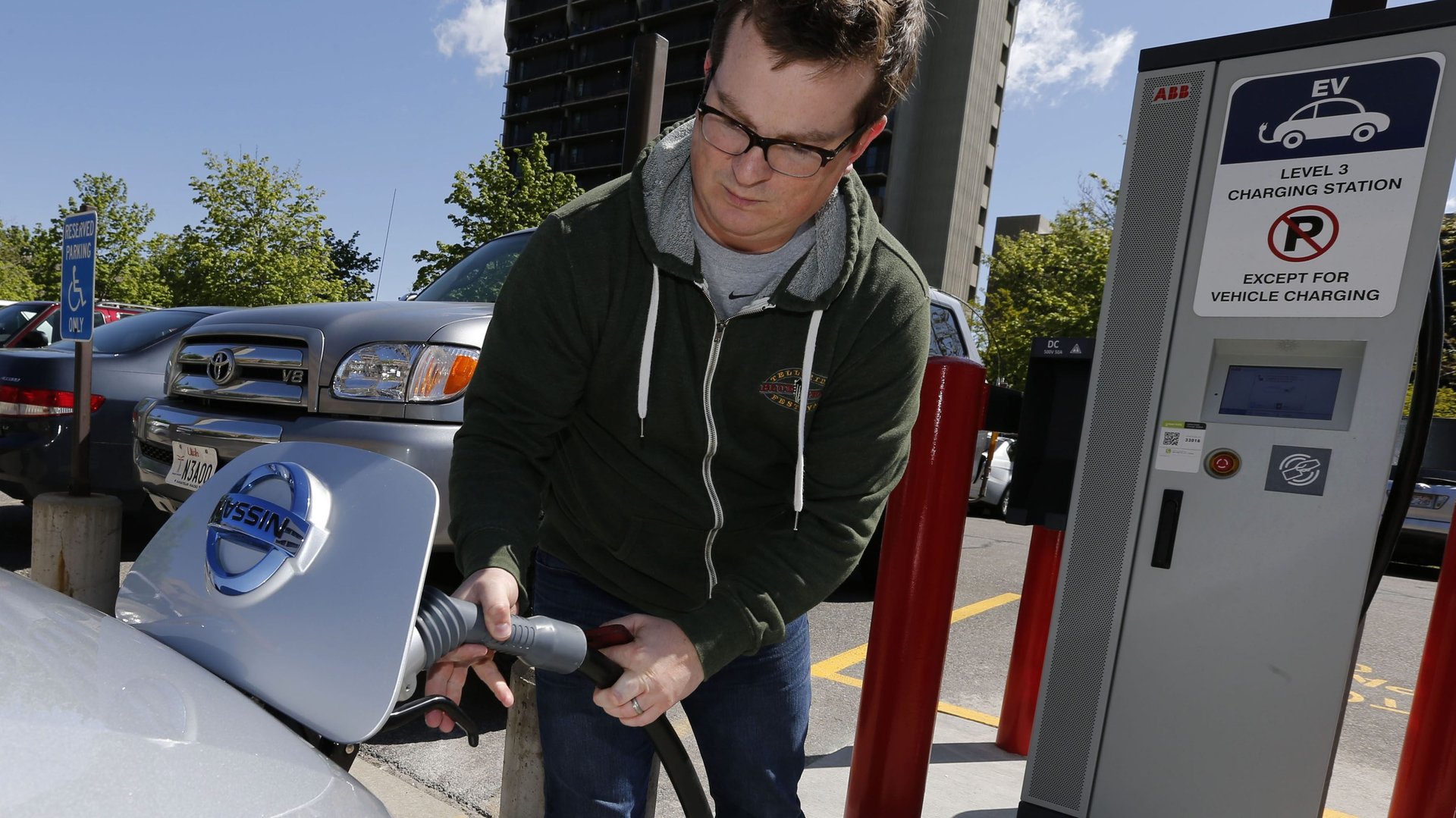Electric cars may soon get a superhighway from Chicago to Orlando
Depending on the model, a fully charged Tesla can go a little more than 300 miles before needing to re-charge, roughly the six-hour driving distance between New York City and Norfolk, Virginia. For daily commuters who rarely drive that far before returning home, that kind of range might be fine. But what about a road trip?


Depending on the model, a fully charged Tesla can go a little more than 300 miles before needing to re-charge, roughly the six-hour driving distance between New York City and Norfolk, Virginia. For daily commuters who rarely drive that far before returning home, that kind of range might be fine. But what about a road trip?
Before electric vehicles really stand a chance of overtaking gas-burning engines, charging stations need to be as common along highways as gas stations. In the US, there are two main EV charging networks, Electrify America and EVgo, with more than 1,300 stations between them. But both are concentrated on the West Coast and the Northeast, with big gaps in the Southeast and Midwest. Long-distance “range anxiety” is still a major barrier to EV adoption, according to consumer surveys and peer-reviewed studies, and stations near highways are a key solution. Now, some power companies are spotting an opportunity to fill the gap.
On March 2, a group of six electric utilities announced a plan to build an extensive network of highway EV charging stations spread across 16 southeastern states. The plan is sparse on details, including a timeline for completion and the number of stations, but aims to allow EV drivers to travel between cities as far afield as Washington DC, Chicago, San Antonio, and Orlando. Stations in the network will be equipped with DC-voltage fast chargers that can fill a battery in under 30 minutes, according to a press release from Dominion Energy, one of the utilities.
“It’s extremely encouraging to see a proactive announcement of this scale,” said Erika Myers, a senior EV analyst at the World Resources Institute, which is not involved in the initiative. “For utilities to take a leading role in the EV charging rollout will provide a significant amount of new coverage that does not currently exist. It would make a huge difference to the speed of the EV transition.”
Utilities have a strategic imperative to dive into EV charging, Myers said. In addition to gaining revenue from electricity sales (at a time when utilities are losing many customers to rooftop solar), utilities can situate EV chargers in locations where grid connection costs are low, saving money for themselves and for consumers. EV charging stations managed by power companies also become a tool for them to balance overall electricity supply and demand: They could offer incentives for drivers to charge during low-demand hours or use EVs to soak up excess solar or wind power at times of peak production.
The initiative, Myers said, ”signals that utilities are willing to more deeply engage with electrification, and they’re the future fuel providers, so we can’t do it without them.”